Summer has arrived, and you’re probably anxious since you know what that means — PTO requests are here.
Everybody’s excited about their upcoming summer vacations — swimming, sipping cocktails on the beach, and doing nothing. Well, ‘doing nothing’ is far from what you’re currently doing, as someone has to manage all those time off requests.
Now, we know how stressful and daunting handling time off requests can be. Make everyone happy, try squeezing in all requests while making sure the workload stays intact.
Don’t despair — we have some hands-on tips on how to survive the summer time off season easily.
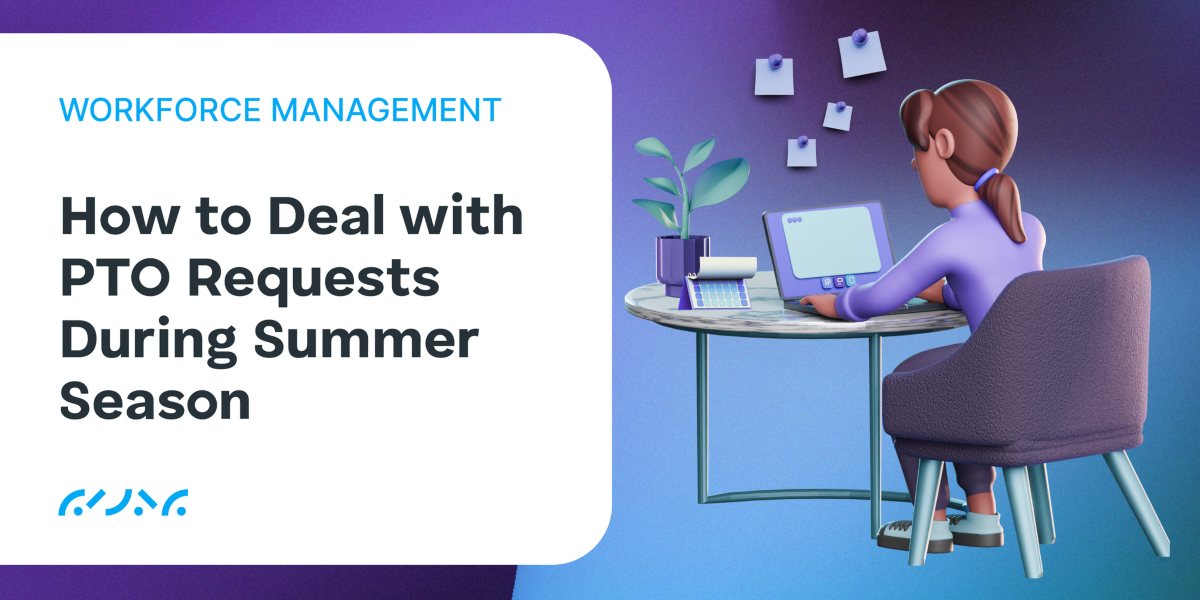
#1: Establish a clear time-off policy
First and foremost, your company should have clearly defined rules on PTO. This means your employees must be aware of company guidelines and terms about their days off from day one.
To avoid any confusion about it, a quality time off policy must cover the following:
- It’s easy to understand and access,
- It clearly states how much PTO an employee is entitled to (depending on employment type, seniority, and other factors),
- It addresses questions about accruals, payment of unused PTO, and
- It states clear instructions about how employees can request and use PTO.
But how much PTO should you include in your company policy?
For your reference, the US Bureau of Labor Statistics states that private sector employees receive an average of 11 days of vacation leave after 1 year of service.
Still, that’s just an average number you can keep in mind when crafting your time off policy. Work-life balance is crucial for employee productivity, so don’t hesitate to offer even more days off, as it may also attract top talent and reduce employee turnover.
Finally, make sure you include your time off policy in the employee handbook to be available to anyone, at any time.
💡 CLOCKIFY PRO TIP
Speaking of work-life balance, read the following text on the matter and find out some astounding facts and statistics about work-life balance around the world.
#2: Foster a culture of team communication
Now comes another important aspect of handling time-off requests more easily — fostering open communication within your team.
Your defined time off policy may serve as a blueprint for your employees, but you still need to communicate certain things to ensure it’s implemented smoothly.
First off, define a deadline for submitting the requests. For example, let employees submit their summer vacation leave requests until April or May. This eliminates late requests and stress-free PTO management in general.
In case your company has rotating schedules, make sure to allow shift swaps within teams so that employees can exchange shifts with other teammates. Also, for seamless communication among your team, opt for a reliable team chat app.
I’ve had an opportunity to chat with Dunja Jovanović, Copywriting Manager, who manages a team of writers and editors. She also emphasized the importance of team communication during busy summer seasons as being the most important factor when managing multiple PTO requests:

“It’s rather simple — foster open communication. My team consists of content writers and content editors, and we always need to have at least one editor available for our team to function well. I encourage editors to consult each other before requesting days off and be open about their needs and preferences. I think it’s the key to smooth time off management.”
Then, to avoid overlapping time off requests, you should provide your employees with the company’s time off timeline, such as the one in the image below.
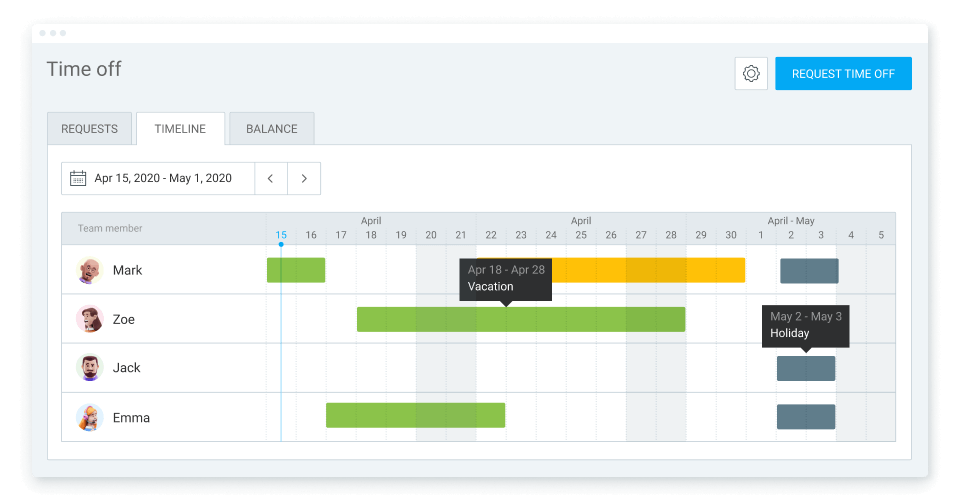
This way, your employees can see when their colleagues are on vacation and for how long, letting them be aware of everyone’s time off way in advance.
Therefore, effective team communication can aid in making your time off policy more transparent and easy to manage.
#3: Stay on top of your workload
While making sure your employees are getting a well-deserved vacation, you must double-check that your work doesn’t suffer, too. Somebody still needs to meet those pesky deadlines.
So, how to do both — manage all time off requests and get the work done without overworking the rest of the team?
It may sound simpler than you anticipated, but the key is to have a plan.
Prepare for the summer season well in advance — prioritize important tasks and projects and see which deadlines are due soon. This way, you can easily assign the work to the rest of the employees and ensure that your business is running smoothly.
Again, you can make use of the apps around you — for better workload management, try Plaky.
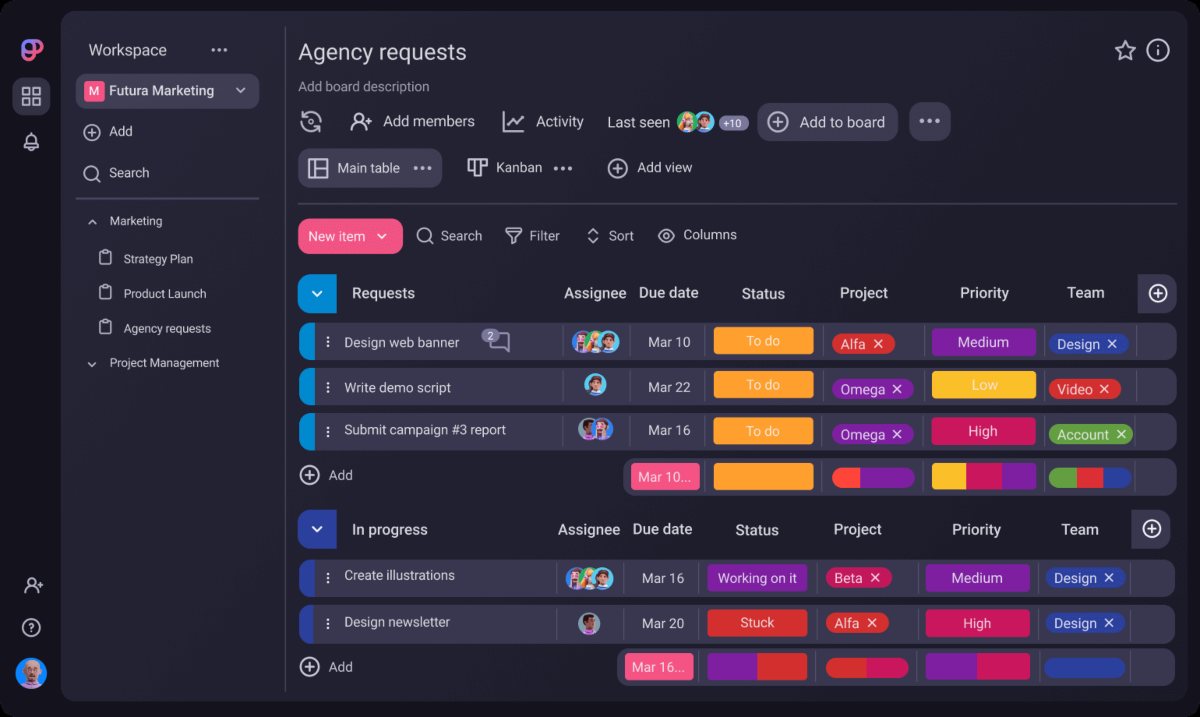
Plaky ensures that you cover all the bases — creating to-dos, assigning people, defining priorities, meeting deadlines, and much more.
Thanks to Plaky, you’ll never be behind with work, no matter the time of the year.
You may even seek help from other teams or think about employing freelancers for this peak season.
💡 CLOCKIFY PRO TIP
A remarkable technique to make sure you prioritize your tasks and projects the right way is by incorporating the Eisenhower matrix into your daily routine. Read the text below to catch on to it better.
#4: Use a reliable method for managing and tracking PTO
To avoid having your employees hand in written time off requests (or use any other cumbersome method for that reason) — opt for a tool that will simplify the process of taking and managing time off requests.
A time tracking app, Clockify offers a plethora of features, including time off management and tracking — all game-changers in the sea of time tracking software.
Clockify provides simple time off processing and creates unique time off policies. Once you enable the Time off function in Clockify, creating and managing time off policies in Clockify is straightforward.
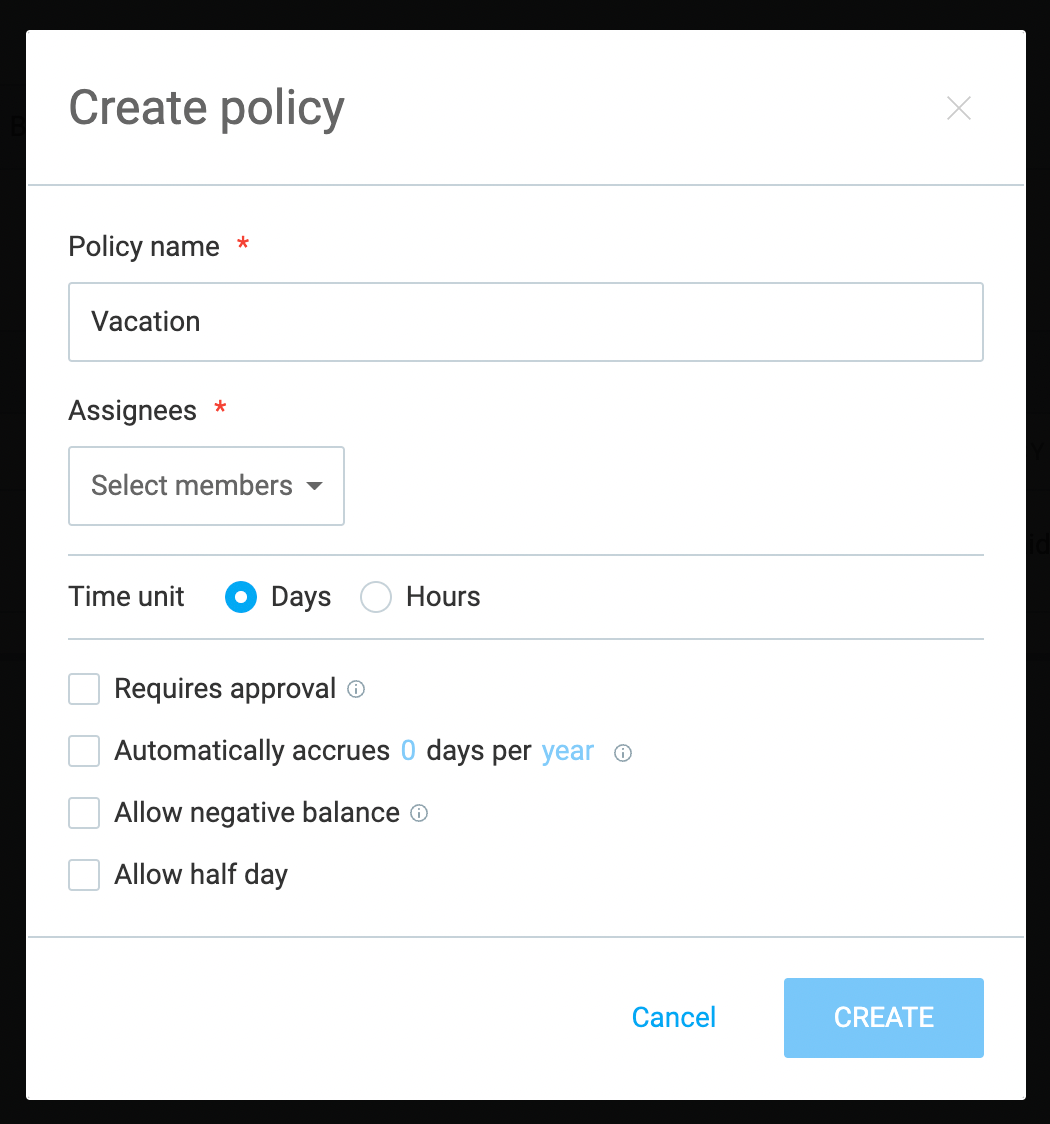
To create a policy, simply give it a name, select to whom the policy applies (when you have different policies for different people), and choose whether you want your employees to request time off in days or hours.
Then, if you check the Requires approval section, you can choose a person responsible for approving time off requests — a team manager, HR, or any other person you choose.
Moreover, Clockify ensures your employees automatically receive a fixed amount of time off (days or hours) at the beginning of each year or month.
Other amazing benefits of using Clockify for creating your time off policy is allowing a negative balance (mostly used for Sick leave) or letting your employees take a half-day leave.
As for managing your employees’ time off, they’ll be more than happy to hear that requesting time off in Clockify is done in a matter of seconds.
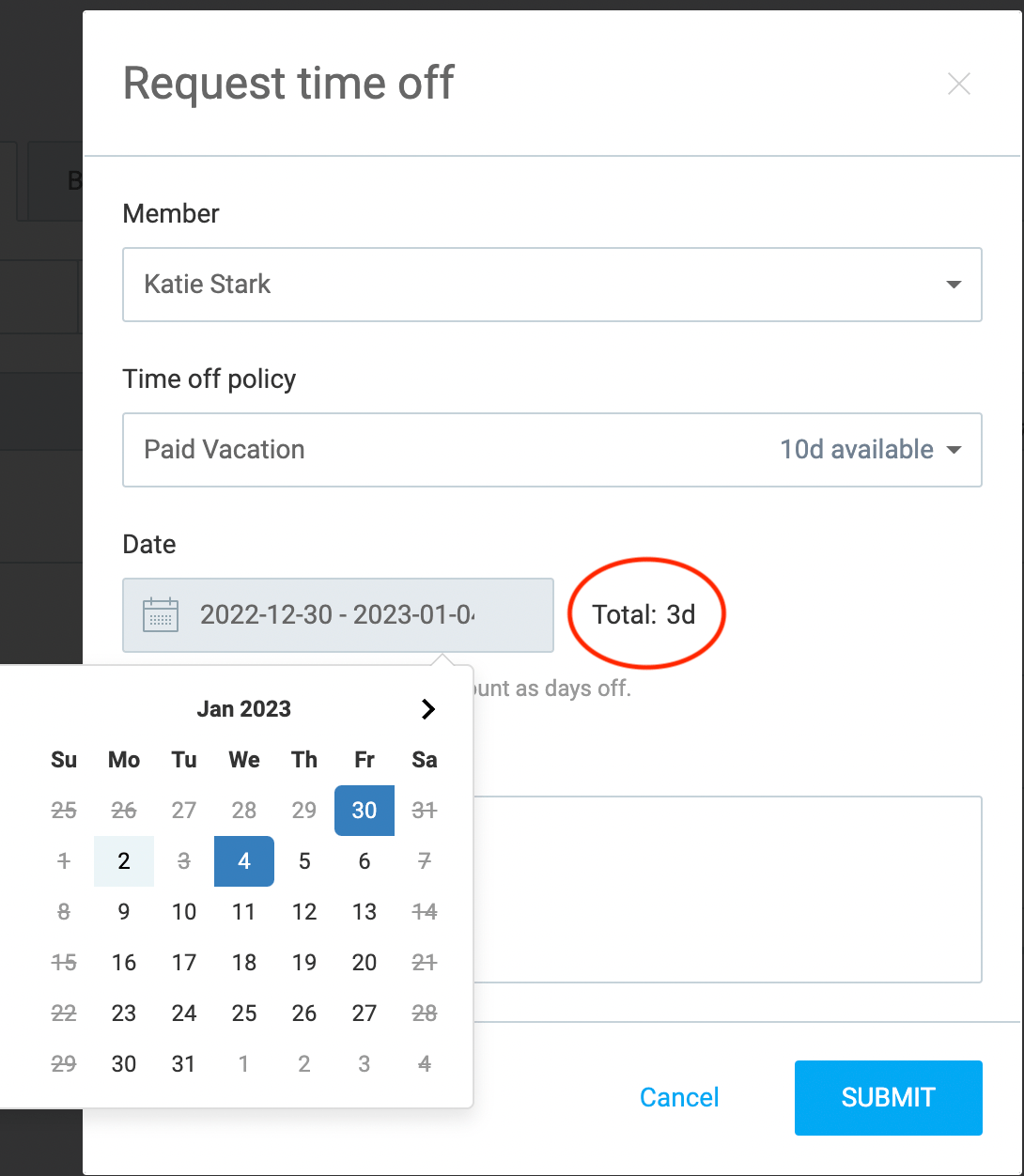
After selecting a time off policy (in this case, Paid Vacation), an employee needs to select the period for which they want to take time off, write a note, and click Submit. As easy as that.
After you approve their request, the employee receives an email that their time off has been approved, just like the one below.
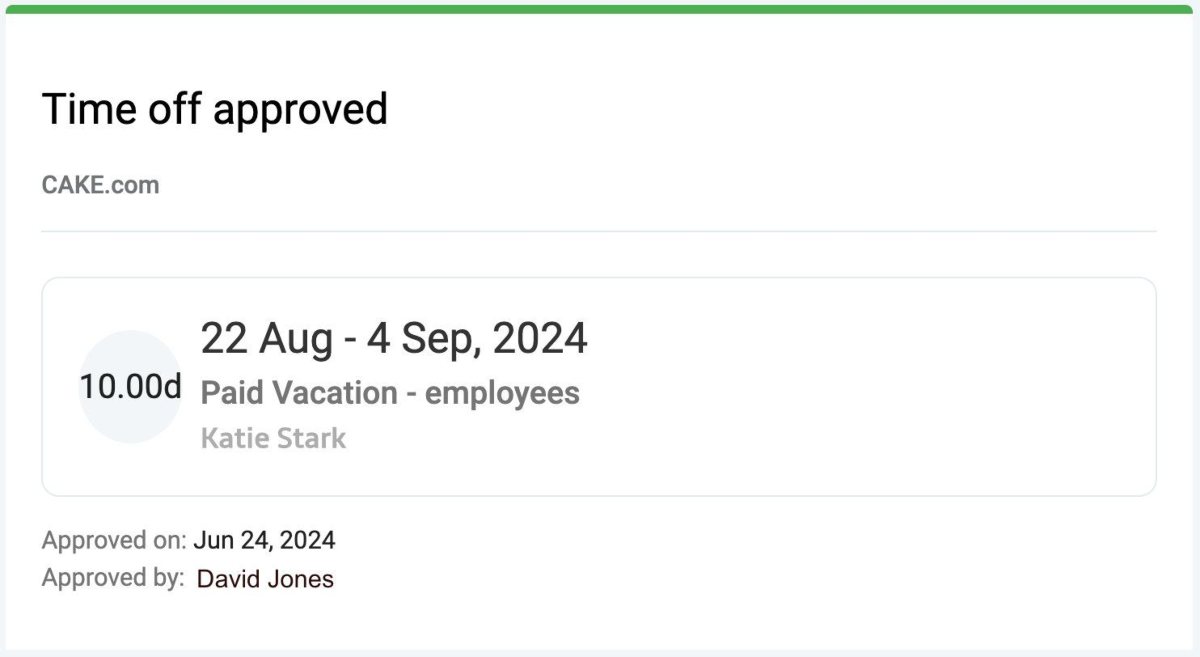
No manual work, data entry, or hand-written requests — just a reliable time tracking software.


